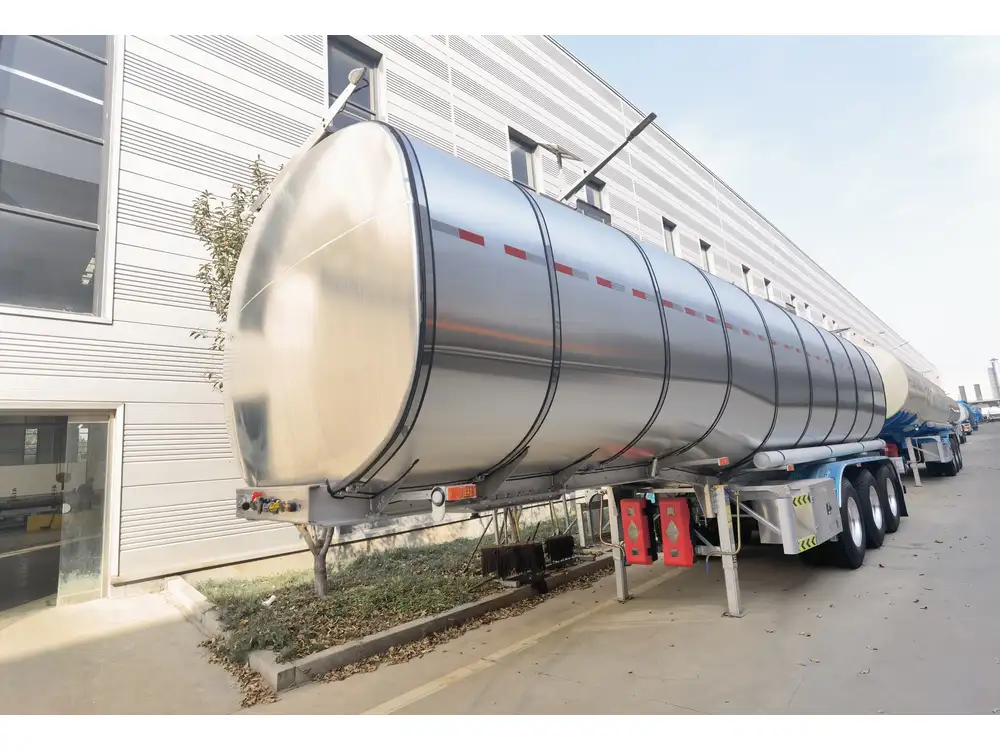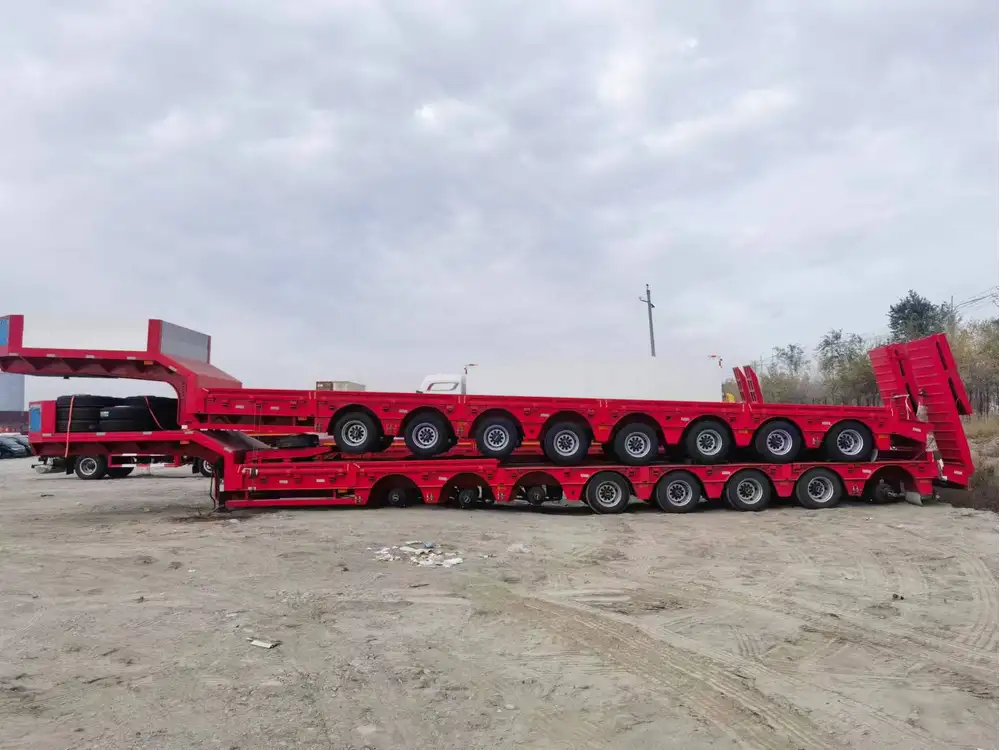When it comes to hauling heavy materials, semi dump trailers are indispensable. Their unique design and functionality cater to a diverse array of industries such as construction, landscaping, and waste management. However, one of the most common questions we encounter is: How many yards fit in a semi dump trailer? Understanding the capacity of these trailers is crucial for businesses and contractors, as it directly impacts logistics planning and material handling efficiency.
What is a Semi Dump Trailer?
Definition and Functionality
A semi dump trailer functions integrally within the trucking industry, serving as a detachable cargo container. It comprises a trailer that attaches to the tractor unit of a truck, designed specifically to carry bulk materials. It facilitates the transportation of a variety of materials, ranging from soil, gravel, and sand, to construction debris and even agricultural products. The key characteristic that distinguishes dump trailers from standard trailers is their ability to tilt at an angle, allowing for efficient unloading of materials.

Design Features
Structure: Constructed with robust materials such as steel or aluminum, these trailers are engineered to withstand heavy loads.
Capacity: The capacity of semi dump trailers varies based on several factors, including dimensions and intended use.
Tilting Mechanism: Most semi dump trailers come equipped with hydraulic lifts, enabling them to tip their contents for swift and effective unloading.
Calculating the Yards a Semi Dump Trailer Can Hold
Standard Dimensions
To determine the capacity in cubic yards, it is imperative to first understand the standard dimensions of a semi dump trailer. Here are the typical specifications:
| Trailer Type | Length (ft) | Width (ft) | Height (ft) | Volume (cubic yards) |
|---|---|---|---|---|
| Standard Semi Dump | 16 – 24 | 8 | 4 – 6 | 10 – 24 |
| Extended Semi Dump | 24 – 30 | 8 | 4 – 6 | 16 – 30 |
The capacity can be roughly calculated using the formula: [ \text{Cubic Yards} = \left( \frac{\text{Length (ft)} \times \text{Width (ft)} \times \text{Height (ft)}}{27} \right) ]
For example, for a standard semi dump trailer measuring 20 feet long, 8 feet wide, and 5 feet high, the capacity in cubic yards would be: [ \frac{20 \times 8 \times 5}{27} \approx 37.04 \text{ cubic yards} ] However, considering the practical limitations in loading and unloading, the effective carry capacity can be slightly less.

Common Capacities
- 10 – 12 Cubic Yards: Common in landscaping and residential waste collection.
- 14 – 16 Cubic Yards: Popular for medium to large construction jobs.
- 20 + Cubic Yards: Utilized for heavy loads in commercial construction and large-scale earthworks.
Factors Affecting Load Capacity
Understanding how many yards a semi dump trailer can carry goes beyond just dimensions. Various factors influence the effective capacity:
1. Material Type
The weight and density of the material being hauled play a pivotal role. For instance, a load of dry sand is significantly heavier than a load of loose leaves.
| Material Type | Approx. Weight (lbs per cubic yard) |
|---|---|
| Dry Sand | 2700 |
| Gravel | 1200 – 1600 |
| Topsoil | 1000 – 1200 |
| Mulch | 400 – 800 |

2. Weight Limit Regulations
Every state has specific weight restriction laws. For example, the federal limit for a standard semi-truck and trailer combination is approximately 80,000 pounds. This limit includes the combined weight of the truck, trailer, and cargo. Exceeding this can lead to fines and potential damage to roads.
3. Trailer Configuration
Different configurations such as single or tandem axles can impact how much a trailer can carry while remaining compliant with weight regulations. Tandem axle trailers generally offer a higher weight capacity due to better weight distribution.
4. Operational Considerations
The method of loading (e.g., via excavator or conveyor belt) and unloading can also affect practical capacity. In scenarios where materials are packed tightly, there could be additional volume that exceeds nominal volume calculations.

Tips for Maximizing Load Efficiency
1. Calculate Total Load Weight
Always start by calculating the total weight of the materials you intend to load by: [ \text{Total Weight} = \text{Cubic Yards} \times \text{Weight per Cubic Yard} ] Then compare that against your trailer’s carrying capacity.
2. Use Volume Efficiently
To ensure efficient use of your trailer, load materials uniformly to avoid tipping hazards during transit. Keeping heavier items centered can help maintain stability.

3. Know Local Regulations
Being aware of local weight limits and regulations will enable you to operate within legal bounds and avoid penalties.
4. Regular Maintenance
Routine inspections and maintenance of the electrical and hydraulic systems are crucial to ensure safe and efficient unloading.
Practical Applications and Industries

1. Construction
In construction, semi dump trailers often move soil, gravel, and concrete. Precise knowledge of carrying capacity is critical for scheduling deliveries and minimizing downtime.
2. Landscaping
Landscapers frequently use these trailers for transporting mulch, soil, and decorative stones. Knowing how many yards to load can impact project timelines significantly.
3. Agriculture
For farmers, hauling feed, fertilizer, and other bulk products is commonplace. Accurate capacity knowledge ensures cost-effective and timely operations.

4. Waste Management
Dump trailers are key in hauling refuse and demolition debris. Enhanced capacity utilization helps in reducing the frequency of trips to dumps or transfer stations.
Conclusion
The question of how many yards fit in a semi dump trailer is foundational for many industries. The straightforward calculations based on dimensions provide a starting point, but understanding the nuances, such as material type, weight regulations, and operational efficiencies, is paramount for effective logistics management. With the right information at your fingertips, you can optimize loading, streamline operations, and bolster productivity in your endeavors.
As businesses become increasingly reliant on efficient material handling, recognizing the capabilities of semi dump trailers can lead to significant improvements in operational effectiveness and cost efficiency.
For any further specific requirements or queries about semi dump or any other trailers, feel free to reach out! Your success in transport logistics begins with informed choices and precise calculations.



